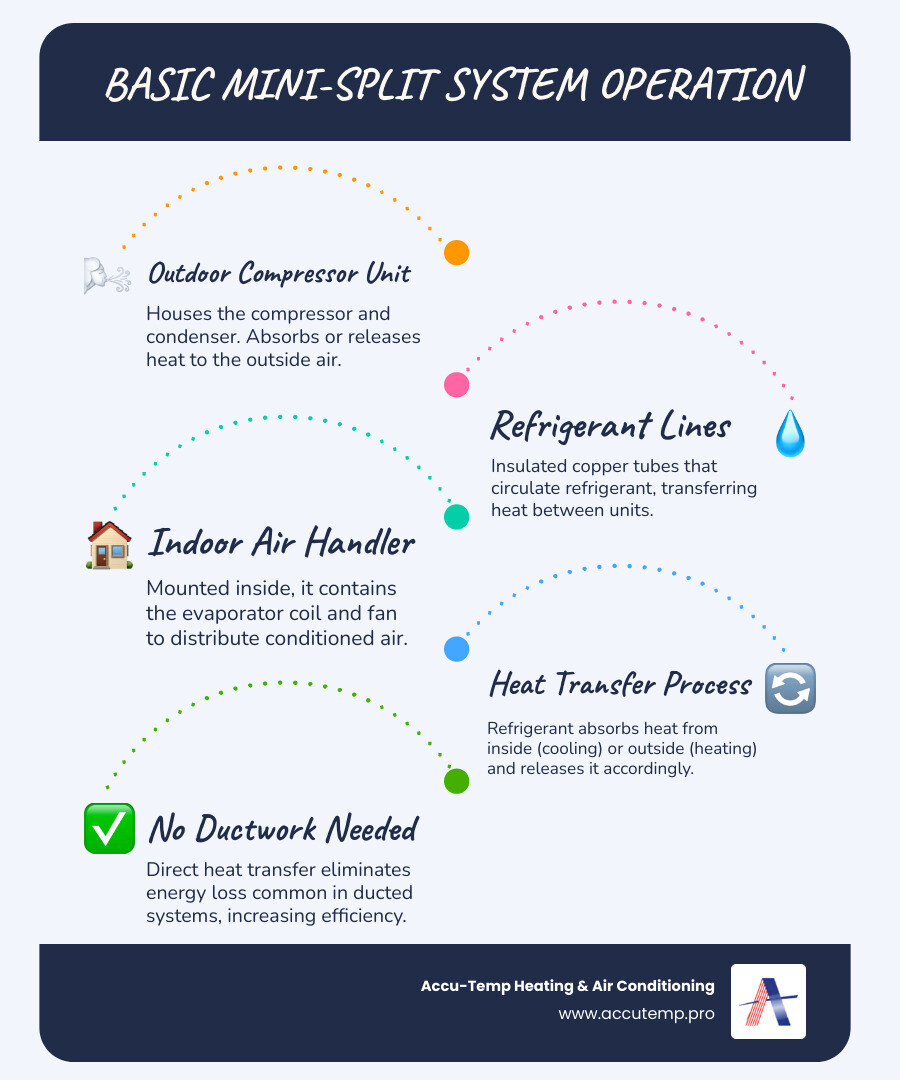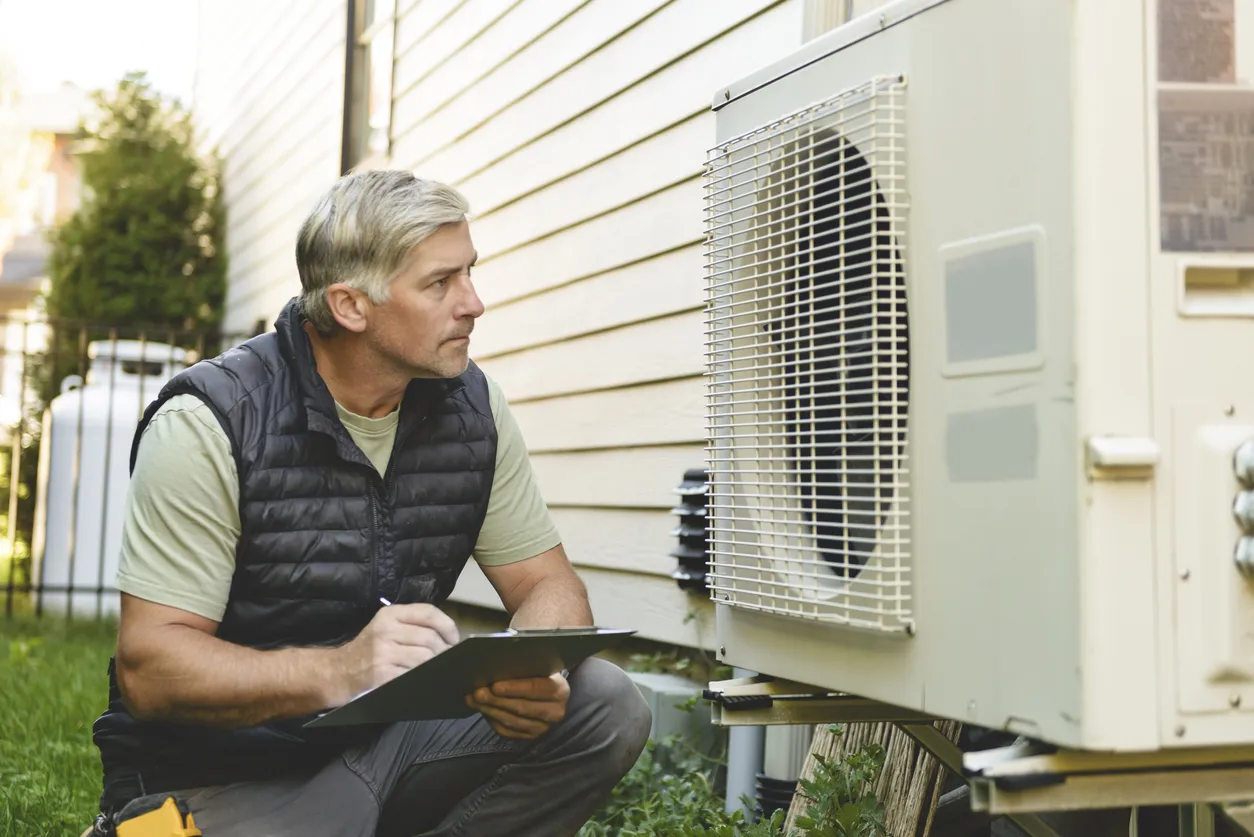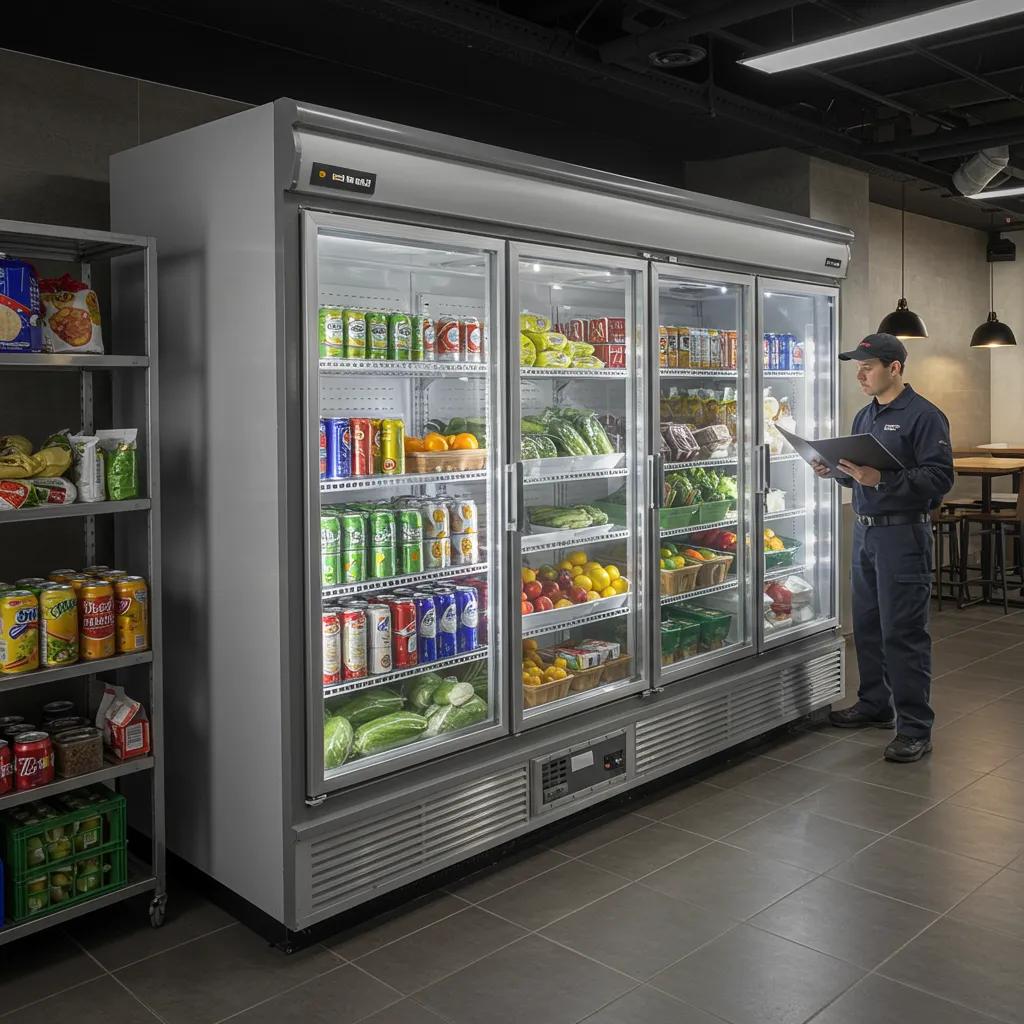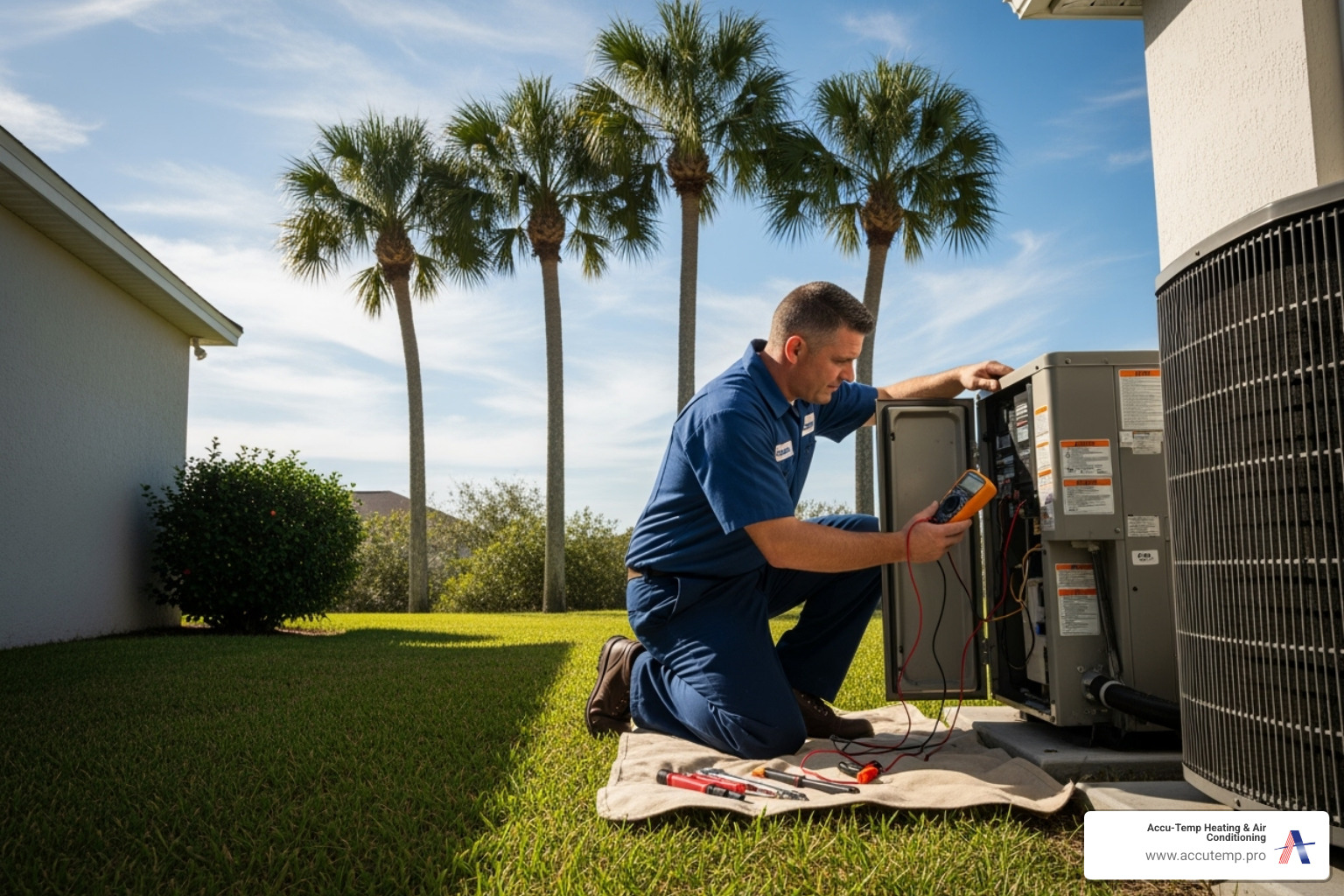Why Choosing the Right Mini Split Specialist Matters
Finding a qualified mini split specialist can make the difference between decades of reliable comfort and a future filled with costly, frustrating repairs. With mini-split systems offering up to 50% lower heating costs and 30% cooling savings compared to traditional systems, the stakes are incredibly high when selecting your HVAC professional. Your choice of installer is just as important as your choice of equipment.
Key Qualities to Look for in a Mini Split Specialist
A true specialist possesses a unique blend of technical skill, local knowledge, and customer focus. Here’s a deeper look at what sets a professional apart:
- Licensed and Insured: This is non-negotiable. A licensed Florida HVAC contractor has passed state-mandated exams, proving their technical competency. Full insurance coverage (both liability and worker’s compensation) protects you, the homeowner, from any financial responsibility in the unlikely event of an accident or property damage during installation.
- Proven Experience with Ductless Systems: Ask for specifics. How many years have they been installing mini-splits? Do they have experience with the brand you’re considering? Can they handle complex multi-zone installations? A seasoned specialist will have a portfolio of work and be able to explain the nuances of different system types and configurations.
- Strong Local Reputation: In communities like Palm Coast and Daytona Beach, reputation is everything. Look for a company with a long history of positive customer reviews on Google, Yelp, and the Better Business Bureau. Positive feedback and word-of-mouth referrals from your neighbors are powerful indicators of consistent, high-quality service.
- Transparent, Detailed Pricing: A professional quote is more than just a number. It should be an itemized breakdown of all costs: the price of the outdoor and indoor units, refrigerant lines, wiring, labor, and any necessary permits. It should also clearly outline the warranty coverage for both parts and labor, so there are no surprises.
- Comprehensive Services: The relationship with your specialist shouldn’t end after installation. A top-tier company offers a full suite of services, including preventative maintenance plans to keep your system running efficiently, prompt repair services for unexpected issues, and expert advice for future needs.
Mini-split systems are sophisticated heat pumps that require specialized knowledge for proper installation and service. Unlike traditional HVAC systems, they use advanced inverter technology and require precise refrigerant handling. A qualified specialist understands how these ductless systems transfer heat efficiently without the energy-losing ductwork that plagues older systems.
The Risks of an Unqualified Installer
Hiring an inexperienced or uncertified installer can turn your investment into a liability. Common mistakes can lead to poor performance, higher energy bills, and frequent breakdowns. These issues include:
- Incorrect Sizing: An oversized unit will constantly turn on and off (short-cycling), failing to properly dehumidify your home—a critical failure in Florida’s climate. An undersized unit will run nonstop, struggling to keep up, which causes premature wear and skyrockets your energy costs.
- Refrigerant Leaks: The connections on refrigerant lines must be flared and torqued with precision. A small leak will cripple your system’s efficiency and can lead to expensive compressor failure.
- Improper Drainage: Each indoor unit produces condensate (water) that must drain properly. An incorrectly sloped drain line can cause water to back up and leak into your walls, leading to significant water damage and mold growth.
The right mini split specialist will ensure your system operates at peak efficiency for its full 15-20 year lifespan, maximizing your return on investment. The wrong one can cut that lifespan in half.
Florida-Specific Installation Expertise
In Florida’s humid and storm-prone climate, proper installation becomes even more critical. Your specialist must understand local building codes, humidity control, and hurricane-resistant mounting techniques. They will ensure the outdoor unit is securely anchored to a concrete pad that meets wind-load requirements and may recommend placing it in a location that’s shielded from corrosive salt air if you live near the coast in areas like Flagler Beach or Ormond-By-The-Sea.
Understanding Mini-Split Systems and Their Benefits
Think of mini-split systems as the smart, efficient cousin of traditional HVAC systems. These ductless technology marvels are revolutionizing how Florida homeowners stay comfortable year-round, especially in areas like Palm Coast and Daytona Beach where flexibility and efficiency matter most.
What makes these systems so special? They use heat pump function to move heat rather than create it, delivering zoned heating and cooling exactly where you need it. This targeted approach means serious energy savings – often 30-50% less than traditional systems – because you’re only conditioning the spaces you’re actually using.
If you’re curious about the science behind heat pumps or wondering whether they’re right for your home, check out our detailed guides on Why Use Heat Pumps and How Do They Work? and Should I Get an AC or Heat Pump?.
How Mini-Splits Work
Here’s where it gets interesting – mini-splits work like a heat-moving superhero. The system has two main players: an outdoor compressor unit and one or more indoor air handlers. They’re connected by a small bundle of refrigerant lines and electrical wiring that carries the magic between them.
The secret weapon is the inverter-driven compressor. Unlike traditional systems that slam on at full power and then shut off completely, an inverter allows the compressor to run at variable speeds. It’s like the cruise control for your car; it makes continuous, tiny adjustments to maintain a perfect temperature, using only the precise amount of energy needed. This results in incredible efficiency and whisper-quiet operation.
During cooling season (which in Florida feels like ten months of the year), the indoor unit’s evaporator coil absorbs heat and humidity from your room. The refrigerant, now a warm gas, travels through the lines to the outdoor unit. The outdoor unit’s compressor and condenser coil then release that heat into the outside air, and the cooled refrigerant cycles back indoors to repeat the process.
When winter finally arrives, the whole heat transfer process reverses via a reversing valve. The outdoor unit actually pulls latent heat from the outside air – even when it’s chilly – and the refrigerant carries that heat indoors, where the indoor unit releases it to warm your space. It sounds impossible, but it works beautifully.
The best part? No ductwork required. Just small refrigerant lines connecting the units through a tiny, three-inch hole in your wall. No massive duct installation, no worrying about leaky ducts losing up to 30% of your precious conditioned air along the way.
Key Advantages Over Traditional HVAC
When a qualified mini split specialist explains the differences between mini-splits and central air, the advantages become crystal clear.
- Energy Loss Reduction: Traditional systems lose a significant amount of energy through leaks, holes, and poor connections in the ductwork. With ductless mini-splits, the conditioned air is delivered directly into the room, eliminating this major source of waste.
- Improved Indoor Air Quality: Ducts are notorious for accumulating dust, pollen, pet dander, and even mold. Since mini-splits have no ducts, they avoid this problem entirely. Furthermore, most indoor units feature advanced, multi-stage filtration systems that actively remove airborne contaminants, helping your family breathe cleaner, healthier air.
- Quiet Operation: These systems are remarkably peaceful. Indoor units can operate at levels as low as 19 decibels—quieter than a whisper. The outdoor units are also significantly quieter than their traditional counterparts, so you won’t be disturbed by a loud machine kicking on and off.
- Zoned Comfort and Flexibility: This is perhaps the biggest lifestyle benefit. With a multi-zone system, you can set different temperatures in different rooms. Keep your home office cool during the day while letting the bedrooms stay warmer, then reverse the settings at night. This level of personalized control is impossible with a single-thermostat central system and saves a tremendous amount of energy.
- Higher Efficiency and Lower Costs: Mini-splits boast some of the highest SEER (Seasonal Energy Efficiency Ratio) and HSPF (Heating Seasonal Performance Factor) ratings on the market. This superior efficiency translates directly into lower monthly utility bills. Many high-efficiency models are also recognized by the federal ENERGY STAR® program, signifying top-tier performance. You can learn more about these ENERGY STAR®-rated models that can lower your heating costs and may qualify you for rebates.
- Less Invasive Installation: Installing a mini-split system is far less disruptive than a full central air system with ductwork. There’s no need to tear open walls or ceilings. A specialist can often install a single-zone system in just one day.
For a complete breakdown of mini-split benefits, visit our comprehensive guide on Mini Split Heat Pumps Benefits.
Types of Indoor Units
Mini-splits aren’t one-size-fits-all. You’ve got options to match your home’s style and your comfort preferences. A specialist can help you mix and match unit types for a truly custom solution.
- Wall-mounted units are the most popular choice. They are installed high on a wall, are cost-effective, and offer excellent airflow. Modern designs are sleek, unobtrusive, and perfect for most residential rooms.
- Ceiling cassette units are ideal for homeowners who want a less visible option. They fit flush into a ceiling (often a drop ceiling) and distribute air in up to four directions, providing exceptionally even temperature distribution and eliminating hot or cold spots.
- Floor-mounted units are a great solution when wall space is limited, such as in rooms with slanted ceilings or large windows. They are installed at the base of a wall and are particularly effective at heating, as they deliver warm air at floor level where it can rise naturally.
- Concealed duct units (also called slim-duct) offer the ultimate in discreet comfort. The unit itself is hidden completely within a ceiling or closet space and uses short runs of small, flexible ducts to deliver air to one or more subtle vents. This gives you the zoned efficiency of a mini-split with the seamless look of a central system.





